
Wittgenstein’s children’s dictionary has been translated into English for the first time.
Talk about a pivot: after philosopher Ludwig Wittgenstein wrote his first book, Tractatus Logico-Philosophicus, he grew unhappy, abandoned his teaching post at Cambridge, and started teaching elementary school in rural Austria. The dictionary he created for his students during his time in Austria, Wörterbuch für Volksschulen (Dictionary for Elementary Schools), is both a useful tool for students and a document of how Wittgenstein’s philosophy was radically altered through working with children. Now, 100 years later, the first English translation of Wörterbuch, Word Book, has been published by Badlands Press—translated by Bettina Funcke, with a critical introduction by Dèsirée Weber, and with art by Badlands founder Paul Chan. Chan’s illustrations for Word Book are also viewable at Greene Naftali until December 19.
The brush-and-ink Drawings for Word Book by Wittgenstein are whimsical and childlike, made with a brush and ink, and their subjects are associative and far-reaching. For “der Rechtsanwalt (lawyer),” Chan draws Ruth Bader Ginsberg; for “Kultur (culture),” onlookers photographing a previous exhibition of his; for “versäumen (to fail to do something,)” a woman taking a photo at the entrance of Auschwitz.
Chan drew with his non-dominant hand, his left hand, for the project. Said Chan, “The spirit of authority is not what motivates the drawings and the book. It’s rather the notion that one’s strength is really one’s weakness, which makes possible the idea that one’s weakness—given the right circumstances or frame of mind—may be one’s real strength . . . I like drawing with my left hand because it feels as if different stakes about what matters on paper became visible to me. Maybe that’s all we’re ever looking for in making any work: new ways to see the stakes that matter.”
Below are some views of Chan’s installation:
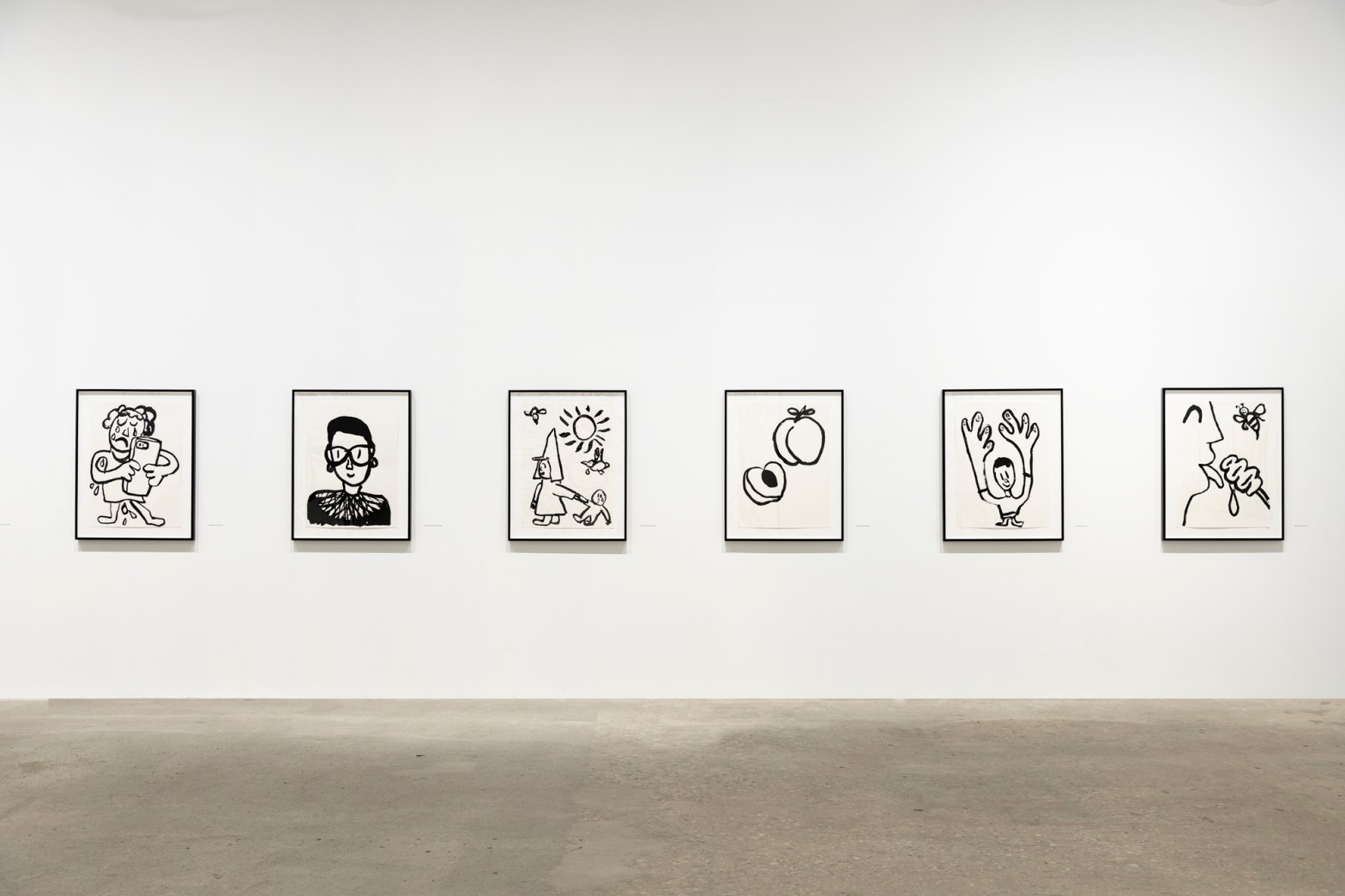
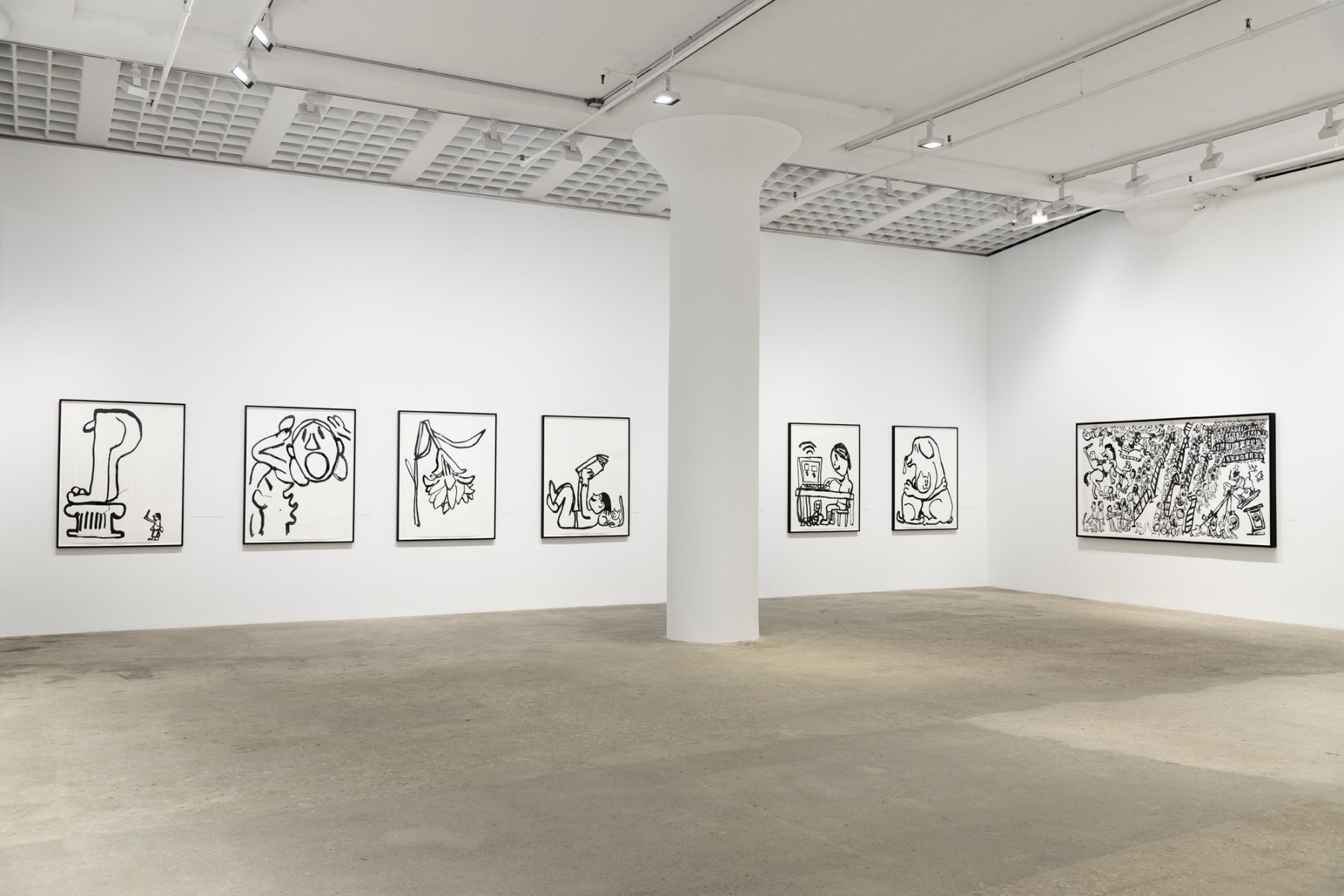
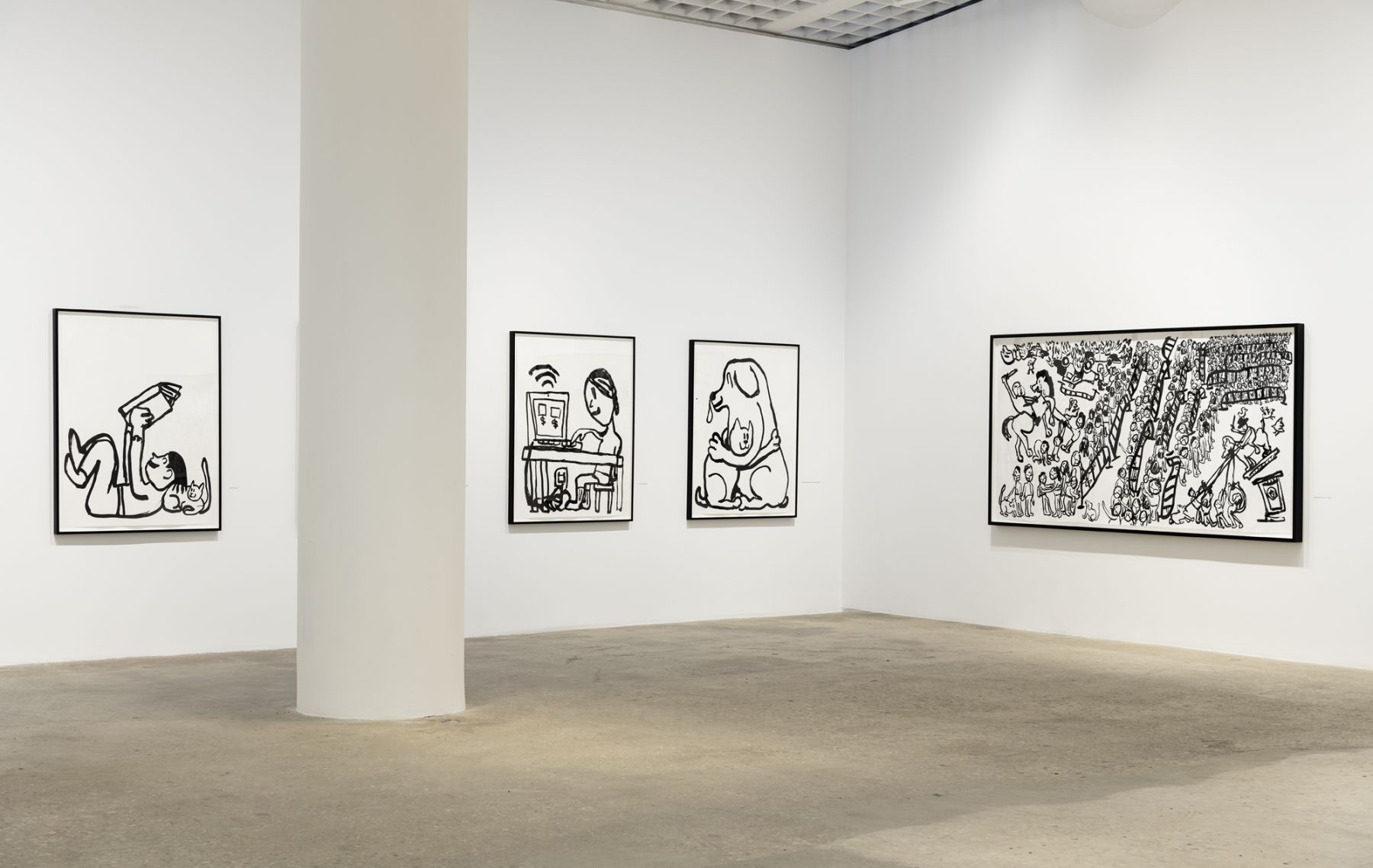
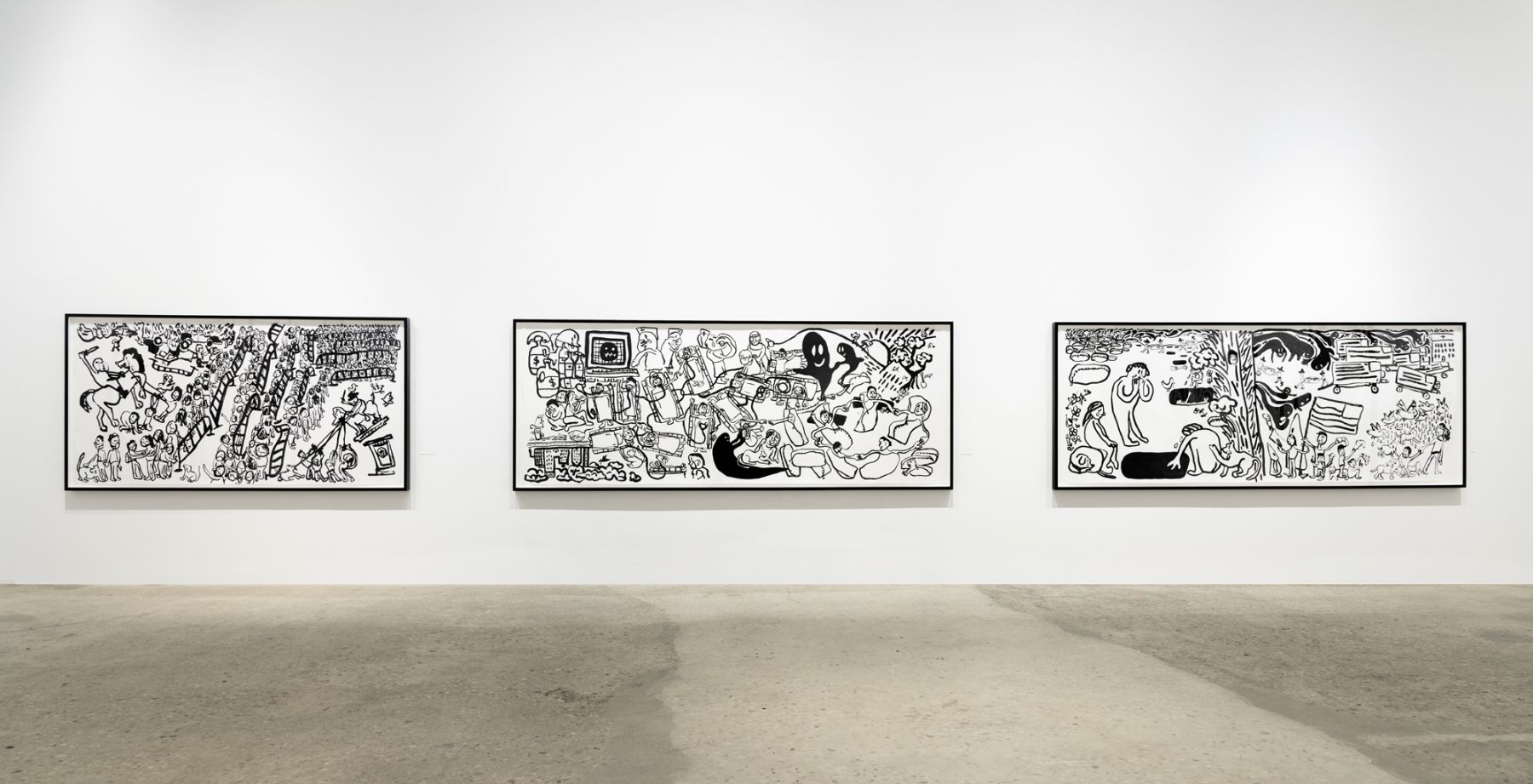
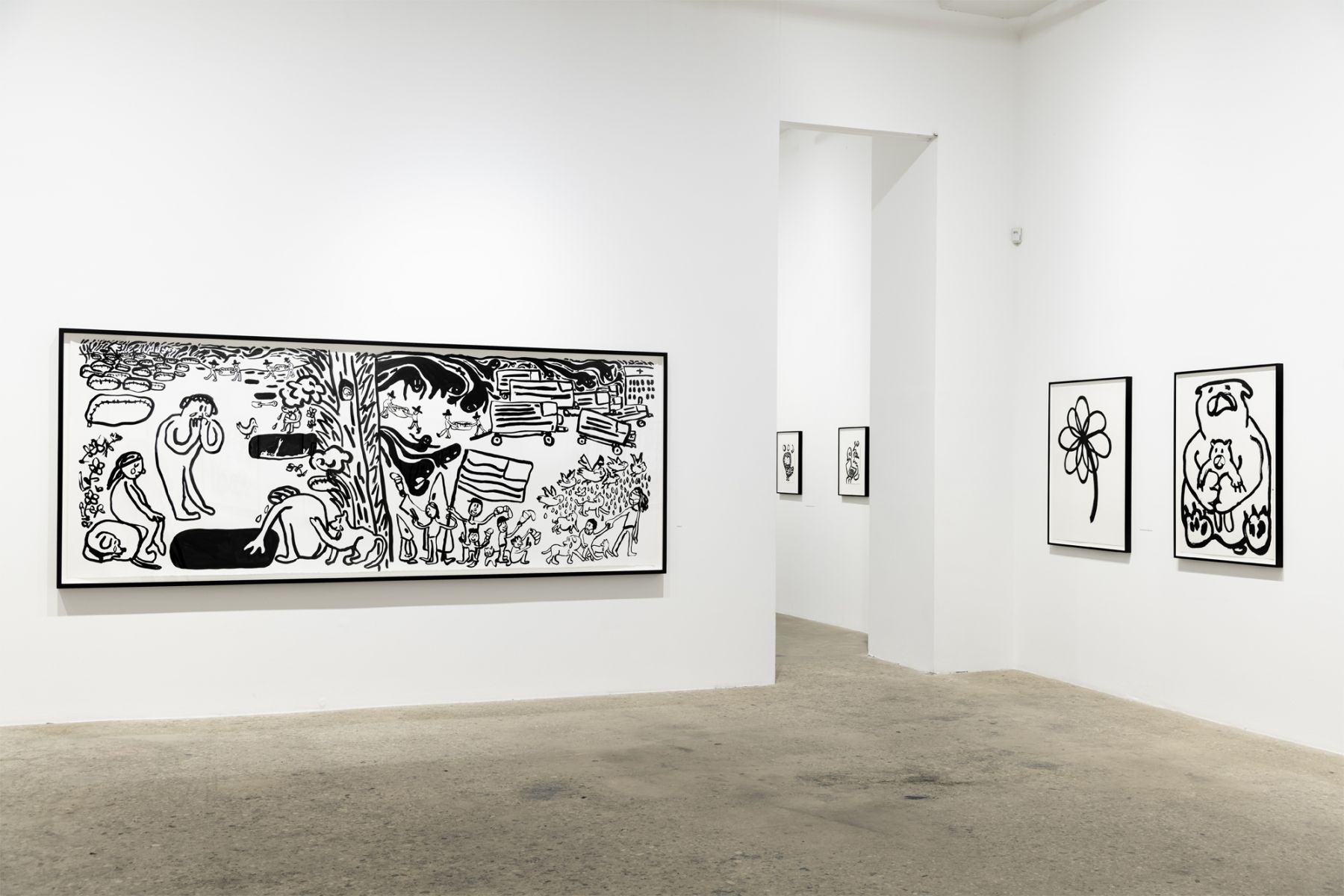
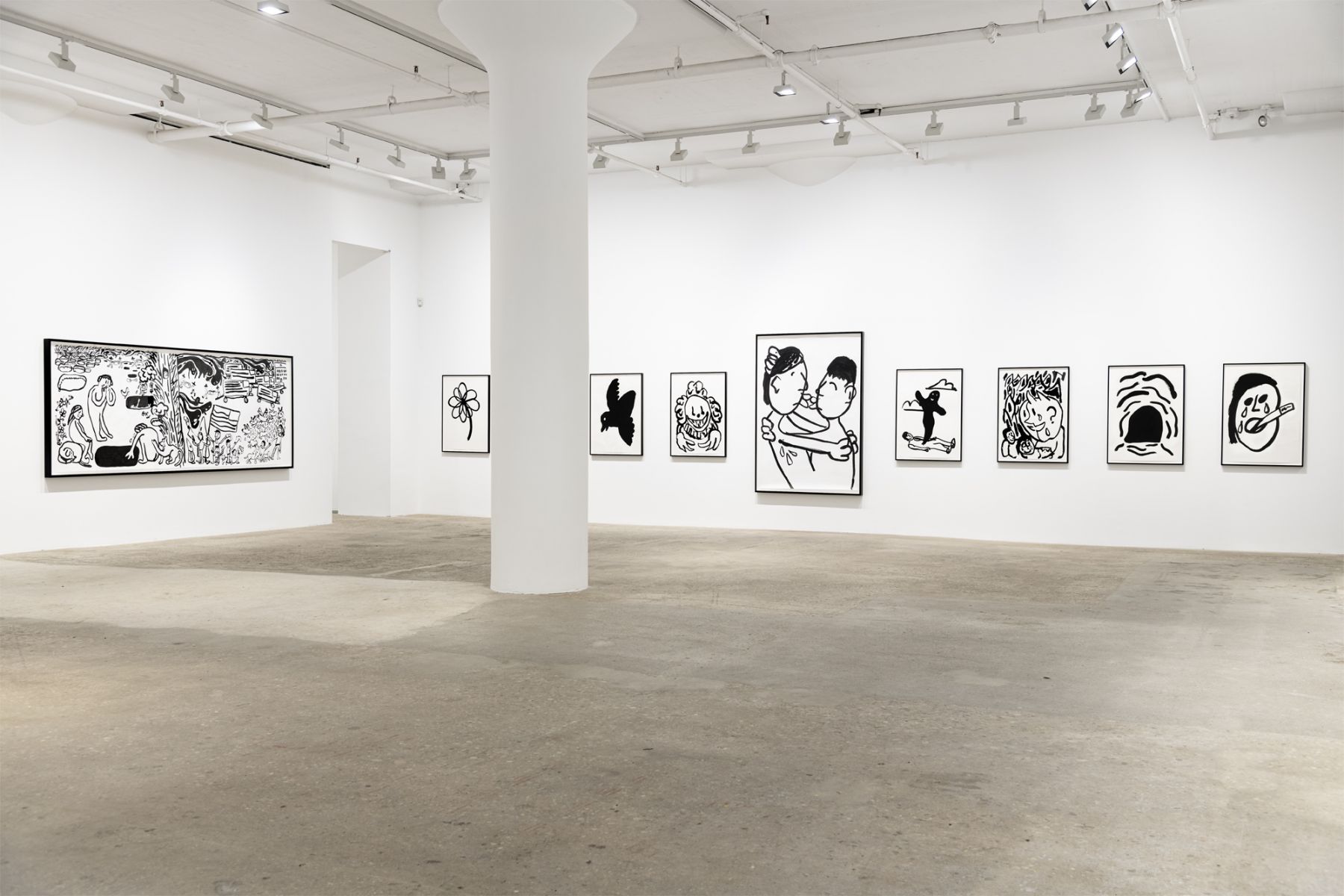
You can see more of the installation here.
[via Hyperallergic, Vogue]
Walker Caplan
Walker Caplan is a Staff Writer at Lit Hub and a writer/performer from Seattle.



















